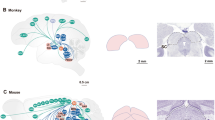Abstract
Despite its complexity, the neural circuitry in the auditory brainstem of vertebrates displays a fascinating amount of order. How is this order established in such a precise manner during ontogeny? In this review, we will summarize evidence for both activity-independent and activity-dependent processes involved in the generation of the auditory brainstem circuitry of birds and mammals. An example of activity-independent processes is the emergence of crude topography, which, most probably, is determined by molecular markers whose expression is genetically controlled. On the other hand, neuronal activity supports cell survival, affects dendritic and axonal growth, and influences fine tuning of maps. It appears that various types of neuronal activity, namely spontaneous versus acoustically evoked, bilateral versus unilateral, uncoordinated versus patterned, play a role during different aspects of development and cooperate with the activity-independent processes to ensure the proper formation of neuronal circuitry.
Similar content being viewed by others
Author information
Authors and Affiliations
Additional information
Received: 3 February 1999 / Accepted: 6 April 1999
Rights and permissions
About this article
Cite this article
Friauf, E., Lohmann, C. Development of auditory brainstem circuitry . Cell Tissue Res 297, 187–195 (1999). https://doi.org/10.1007/s004410051346
Issue Date:
DOI: https://doi.org/10.1007/s004410051346




